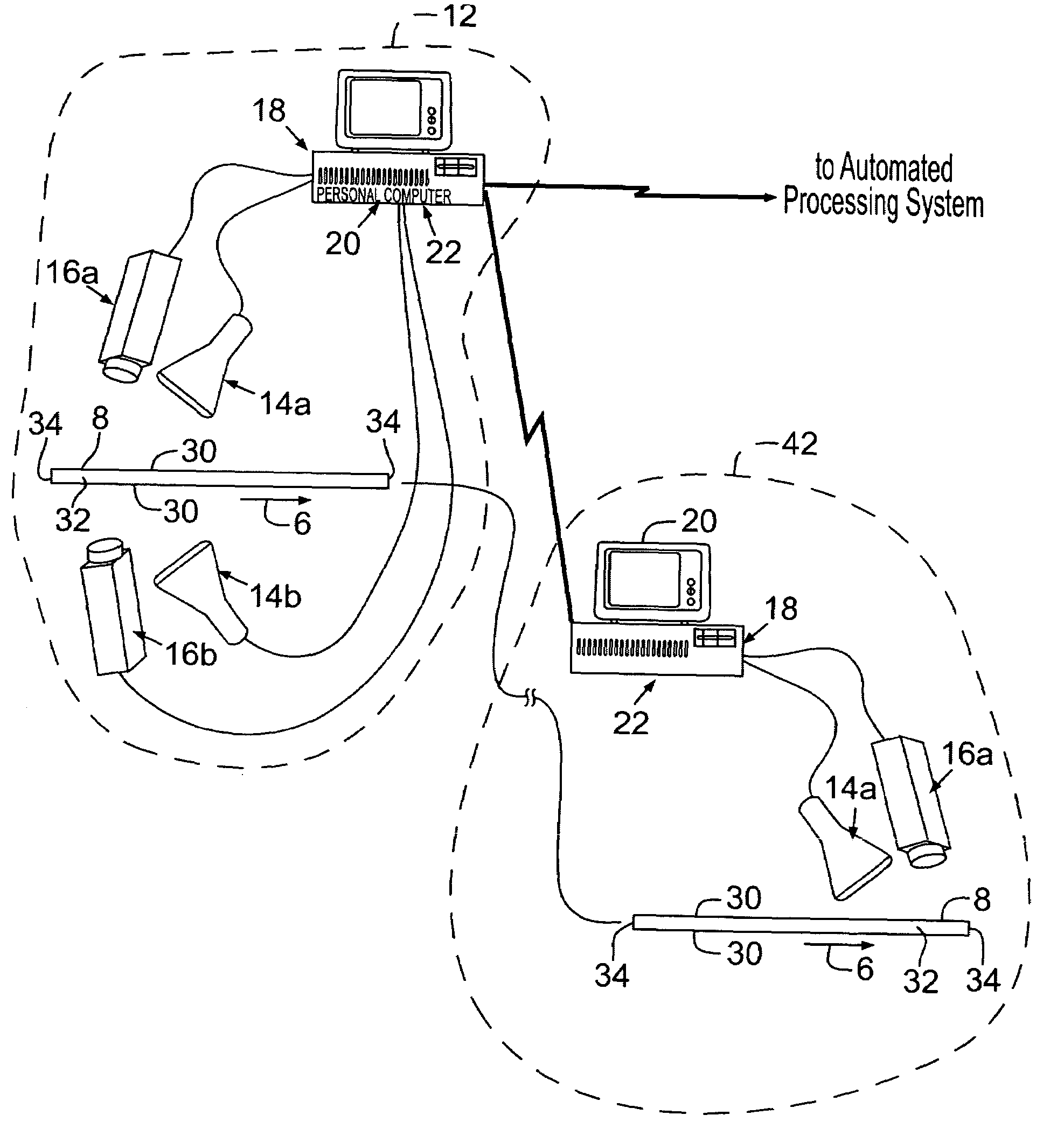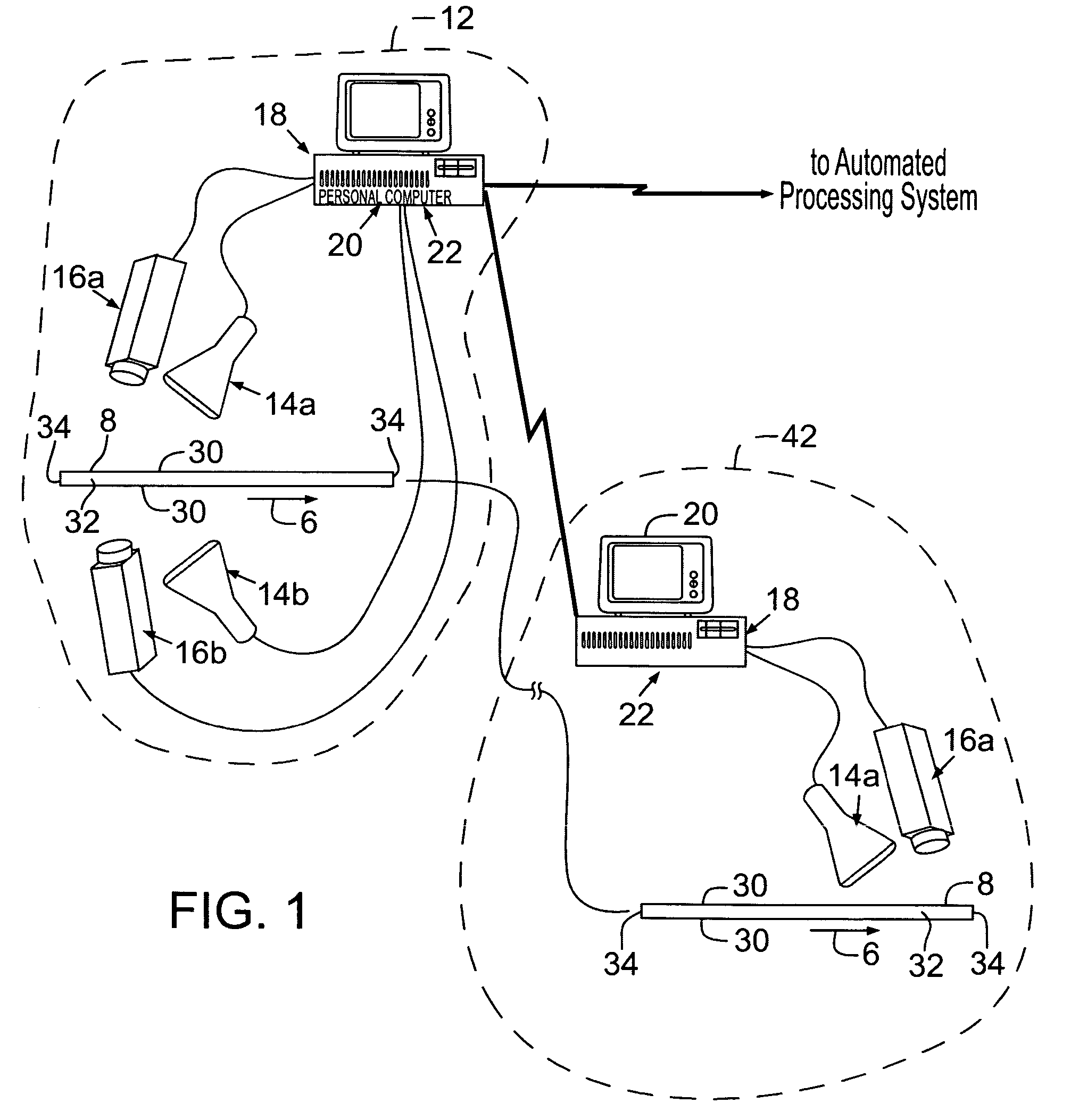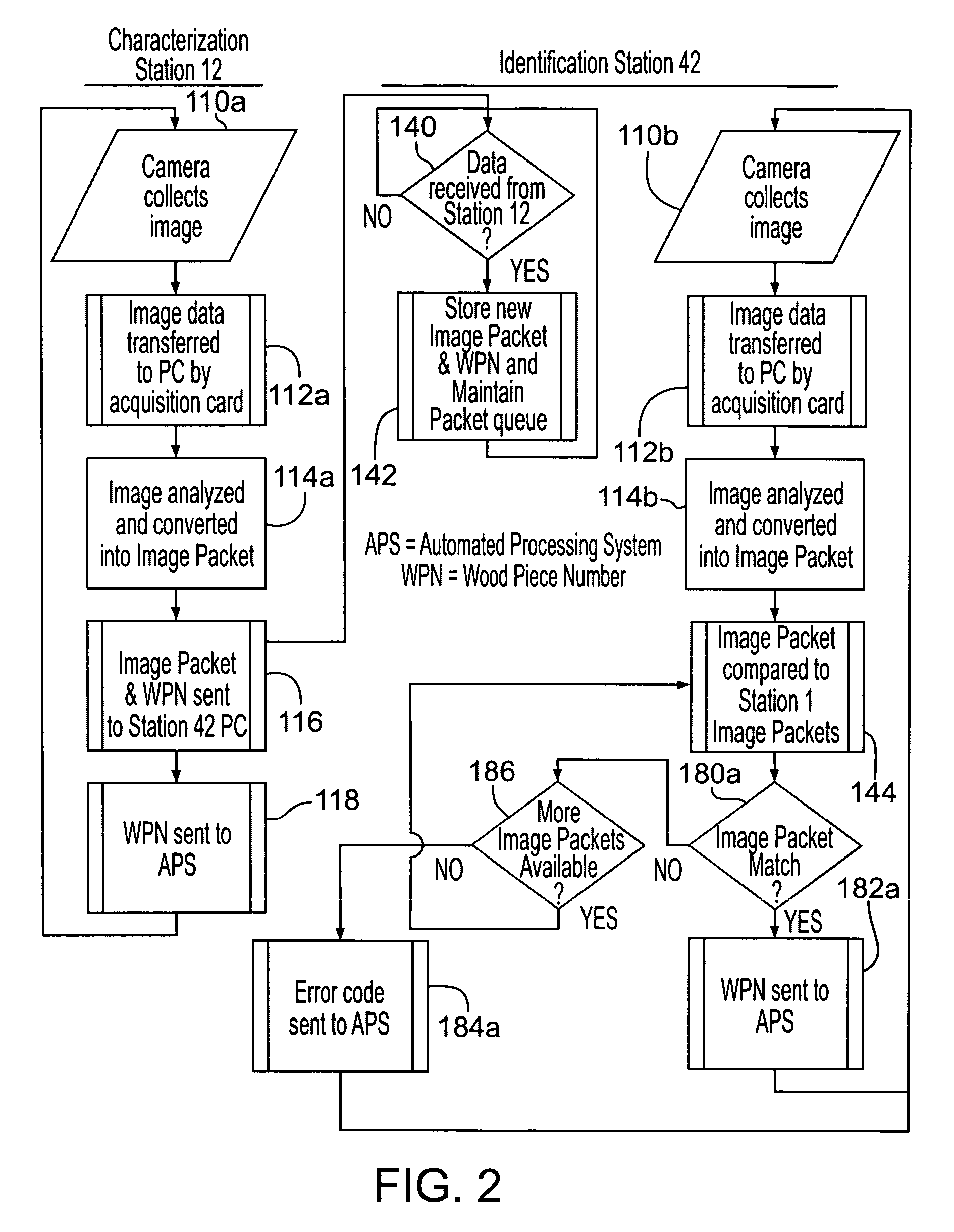Wood tracking by identification of surface characteristics
a technology of surface characteristics and tracking, applied in the field of lumber or board tracking, can solve the problems of physical difficulty in reliably achieving, difficult to reliably mark and identify, and decreasing reliability
- Summary
- Abstract
- Description
- Claims
- Application Information
AI Technical Summary
Benefits of technology
Problems solved by technology
Method used
Image
Examples
Embodiment Construction
[0027]FIG. 1 shows an exemplary wood tracking system 10 for characterizing and identifying pieces of wood 8 in a production line as they move in a direction of travel 6 through an automated production process to downstream processing centers and / or sorting bins. FIGS. 2–4 show general and specific flow diagrams of wood tracking events and analysis employed in some embodiments of wood tracking system 10.
[0028]With reference to FIG. 1, a characterization station 12 captures and processes an image of at least a portion of each piece of wood 8 and then coordinates the tracking of the specific pieces of wood 8 with the automated processing system (APS) as they travel to common or different machining centers for the sawing, grading, and / or subsequent sorting. The pieces of wood 8 can flip over during travel or arrive at the machining centers out of sequence. A downstream identification station 42 at one or more of such machining centers eventually captures and processes the images of most...
PUM
| Property | Measurement | Unit |
|---|---|---|
| angle | aaaaa | aaaaa |
| length | aaaaa | aaaaa |
| length | aaaaa | aaaaa |
Abstract
Description
Claims
Application Information
 Login to View More
Login to View More - R&D
- Intellectual Property
- Life Sciences
- Materials
- Tech Scout
- Unparalleled Data Quality
- Higher Quality Content
- 60% Fewer Hallucinations
Browse by: Latest US Patents, China's latest patents, Technical Efficacy Thesaurus, Application Domain, Technology Topic, Popular Technical Reports.
© 2025 PatSnap. All rights reserved.Legal|Privacy policy|Modern Slavery Act Transparency Statement|Sitemap|About US| Contact US: help@patsnap.com



